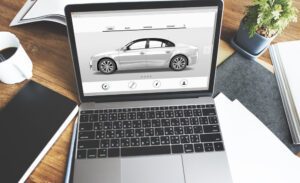Recently, I had a conversation with a friend who heads up a large technology firm which provides Digital Retailing software to auto dealerships. He mentioned due to the current situation with the quarantines or stay-at-home orders in some states many dealers have had to shut the sales floor, or even their entire dealership. Despite this, dealers and OEMs are seeing customers researching cars online or reaching out to the dealers who are closed to discuss a certain vehicle. He told me his phones are ringing from dealers who once pushed off the idea of digital retailing in a desperate effort to grab the attention of the shoppers sitting at home.
So why now? For all of us, when something is taken away, it forces us to review our current situation in order to adapt. One dealer who I recently assisted reached out to me and said, “If my team no longer has the option to just set an appointment, what else can we do online? What should we be saying?” It was a simple, honest, but powerful statement because the day to day of auto moves so fast dealers often don’t take the time to slow down and review processes.  A word of warning for the dealers in this mad rush to embrace Digital Retailing–it’s not as easy as flipping a switch and walking away. It is a complete overhaul of everything you currently do in your dealership. In fact, I don’t think the term “Digital Retailing” is entirely accurate, and leads to a dangerous misconception about how it works. GMs often see the word “digital” and push it off to their marketing managers. I refer to it as Modern Retailing and recommend everyone in the dealership be part of the discussion, the decision, and the execution in order for this to transform the dealership. I will point out I did not use that word lightly. Let me reiterate_you will have to transform many of your long-held ways of doing business.
Over the last 18 months, my brother Brian and I have been helping dealers and OEMs create a structure to implement Modern Retailing into their dealerships. The following are a few things we learned during this timeframe which will help you begin this journey. And even for those dealers who are using a Digital Retailing tool, I would recommend reviewing these items as well to make sure you are not missing any steps.
A word of warning for the dealers in this mad rush to embrace Digital Retailing–it’s not as easy as flipping a switch and walking away. It is a complete overhaul of everything you currently do in your dealership. In fact, I don’t think the term “Digital Retailing” is entirely accurate, and leads to a dangerous misconception about how it works. GMs often see the word “digital” and push it off to their marketing managers. I refer to it as Modern Retailing and recommend everyone in the dealership be part of the discussion, the decision, and the execution in order for this to transform the dealership. I will point out I did not use that word lightly. Let me reiterate_you will have to transform many of your long-held ways of doing business.
Over the last 18 months, my brother Brian and I have been helping dealers and OEMs create a structure to implement Modern Retailing into their dealerships. The following are a few things we learned during this timeframe which will help you begin this journey. And even for those dealers who are using a Digital Retailing tool, I would recommend reviewing these items as well to make sure you are not missing any steps.
- Consumers are no longer comparing your online experience to just other dealers. They are comparing your online experience to every other online shopping experience they encounter. Consumers want more ease and transparency in their interactions. We can debate if consumers want to fully buy a car online, but I will hold firm in the belief consumers want to save time and get answers when they ask a question, not days later.
- Before you choose a piece of technology, there needs to be a discussion of what experience you want to offer to the consumers online. How pricing will work, when do you want to ask for their information, do you want to offer the F&I suite of products online–all of these decisions will need to be addressed because they will influence the choice of technology.
- Get a demonstration of multiple products. Do not fall into the trap of using a tool a fellow dealer recommended. A tool that works well for one dealer might be unfit to handle the operations of another. Choose 3-4 retailing tools to review. Make sure to ask the technology team how flexible the tool is, how you will see reporting, how the information connects to your CRM etc. Don’t fall in love with just the look of the tool, you need to make sure it fits for your dealership.
- As the tool is getting installed, understand the rest of the website must be streamlined as well. A review of all other interaction points on the website must happen to remove obstacles of transparency and speed. If you have a button for “Check Availability,” why is there a form which pushes off an answer for days versus a chat pop up where you can attend the customer’s needs right then? Take a moment to review and decide what needs to transform if the goal is to interact online as if the customer was right in front of you.
- If we believe the website is the mid-point of the online journey, you need to look at how you are marketing this new process to the consumer base in your area. If you do not create a name for this process and explain what it is, how will anyone know it exists? Create messaging to show how easy it is to use this technology. Share what is in it for the consumer: saving time, easy to navigate, picking up the process where they left off. Without a great message that is shared in your marketing efforts, dealers will only get a few individuals who stumbled into the tool versus the larger population viewing you as the easiest dealership to do business with.
- Lastly, your online communication must transform from just focusing on getting an appointment to communicating as if they are on the dealership lot. Dealers must finally embrace that their website is their virtual showroom. This means their online communication must come from virtual salespeople. A simple way to refine and re-think process would be to ask your team a simple question. “If someone was in the dealership in person and asked about a vehicle, what would we say? Do we currently respond online the same way?” If not, restructuring the process is past due.


Did you enjoy this article from Glenn Pasch? Read other articles from him here.
Car Biz Today, the official resource of the retail automotive industry.


While you’re here, don’t forget to subscribe to our email newsletter for all the latest auto industry news from CBT News.








